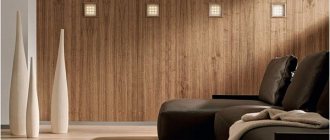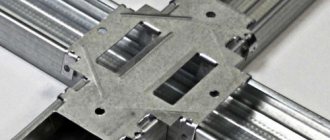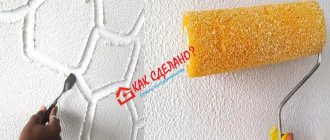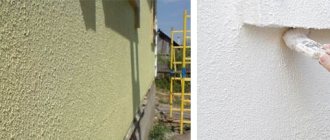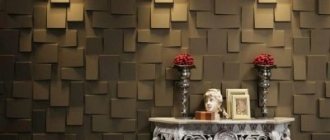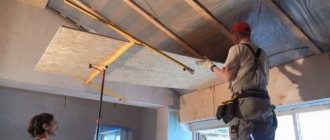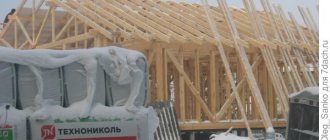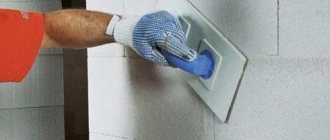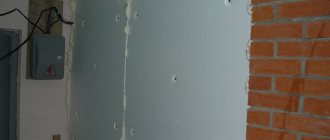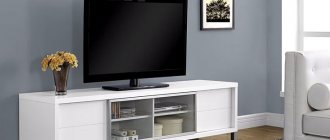Particle board was first manufactured at the end of the 19th century. Casein glue was used to glue the sawdust. However, such panels have not been widely used due to the high cost of production. At that time, the chemical industry could not offer enough cheap binder material.
Chipboard wall panels allow you to get an exclusive option for finishing the premises
The next time the issue of obtaining building material from waste from the timber processing industry was returned to in 1941. The German scientist Himmelheber was the first to make slabs from shavings, using phenolic resins as a binder to hold them together. In 1951, he received a patent for his invention and began to actively implement it in industry.
In the USSR, the first boards were produced by plywood factories in 1957. In the mid-twentieth century, during a period of rapid industrialization, it was necessary to produce large quantities of furniture for the population who moved to live in cities. Chipboard panels for walls made it possible to significantly reduce construction costs, replacing the brick interior partitions of the house.
Various combinations of textures and colors of panels create unique interiors
Important! The production of chipboards has sharply reduced the amount of waste from the wood processing industry.
Compound
Chipboard, unlike fiberboard, which contains fibrous elements, consists of 90-97% sawdust and 3-10% binder material.
Bamboo panels
Sawdust from both deciduous and coniferous trees is used. For low-quality products, the use of construction waste is allowed. Such slabs can be identified by their appearance. On the end cut of such products, inclusions of dark color are visible - these are particles of tree bark; the cut is not uniform.
Important! For chipboards, it is more correct to use the abbreviation DSTP. Chipboard – wood-laminated plastic. Its structure is similar to plywood, but it is much superior in physical properties - hardness and strength. Manufactured at elevated temperature and high pressure.
For your information. The quality of products directly depends on the raw materials used in production.
Sawdust must be homogeneous in wood composition. Do not use sawdust that is too small and resembles dust. At the same time, heterogeneous inclusions of large particles lead to deterioration in the hardness and fracture strength of products.
Decorative plaster
This general term refers to a layer of construction and decorative mixture applied to the surface of the walls. It levels the walls, insulates them, insulates them, and is also, of course, one of the most ancient methods of beautifying a home inside and out.
Plaster mixtures can be divided according to two criteria - according to the composition of the mixture and according to artistic qualities.
Mineral plaster
Mineral plaster is the most economical type of plaster.
This is due to the base of the mixture - cement, which is “seasoned” with chemical additives that provide increased moisture resistance. To this we can add environmental safety, vapor permeability, resistance to fungi and mold, temperature changes, as well as fire safety. Among the disadvantages are the not very diverse color palette and the complexity of application. But the average period of operation of a mineral coating does not exceed 15 years.
In addition to mineral, there is also: silicate, based on liquid glass; silicone, which is based on silicone resins; polymer - with acrylic resin in the composition. Silicone and mineral plasters have the longest service life.
Textured plaster
Textured (structural) decorative plaster is a way of decorating walls that can be called an unfading classic. Due to the fact that the plaster mixture contains various additives (pebbles, fibers, marble chips or ground bricks), this finish can look like rock, valuable wood, cork bark, sand patterns, cracked clay, dug velvet.
Textured types of plaster include the famous “fur coat”, as well as bark beetle plaster, a method of finishing halls and hallways that has been popular for many decades.
Textured plaster is an excellent solution for those who want to get a unique interior. It will definitely provide picturesqueness and sophistication. And at the same time, strength, durability, and fire resistance. Plaster will help hide small defects on the walls, and its price is not bad at all. Textured plaster will not put to shame any of the palace, classical interior styles; it will be a good find for the hall, living room, and dining room.
Judging by the reviews, this design has one drawback - it is difficult to remove when the need for new repairs arises. The time during which textured plaster will not lose its attractiveness is 15-20 years.
Venetian plaster
It's hard to believe that this type of coating is over 500 years old. “Venetian” creates the impression of a noble stone - marble, granite, onyx, jasper, opal, malachite, amber. Such a sophisticated type of decoration literally asks for the walls of spacious living rooms, where there are fireplaces, hanging canvases in lush frames and the spirit of the Renaissance is in the air. Venetian plaster is unique: there are no two identical copies of it in the world! It is precisely this that can be seen inside the palaces of the Venetian doges and the villas of Italian aristocrats. “Venetian” is not only enchantingly beautiful, but also safe, moisture-resistant, durable and capable of pleasing the eye not for years, but for centuries! But the price also matches it.
Manufacturing
Stone effect wall panels
The production process may vary from manufacturer to manufacturer, but in any case several mandatory steps are performed:
- preparation of raw materials;
- drying and calibration;
- mixing components;
- creating a form;
- pressing;
- grinding;
- coating application.
At the first stage, the wood raw materials arriving for processing are separated by quality and wood species. The density of the product, its mass and physical properties depend on the type composition of the chips. Wood shavings mixed with tree bark are used to make low-quality products. At the preparation stage, additional crushing of the raw material is carried out in order to give the particles the same size.
At the drying stage, a hot air stream in a special chamber dries the raw materials to a humidity of 5-7%. Next, using a vortex installation, the sawdust is divided into fractions based on particle size. If necessary, re-grinding is carried out. At the next stage, the prepared sawdust and binding materials are combined in mixers, most often formaldehyde resins. Then the finished mixture is fed using a conveyor belt for cold and then hot pressing. The cooled workpiece is sawn into dimensions established by the standards.
Sanding makes the sheet smooth, removing irregularities and burrs.
At the last stage, a decorative coating is applied to the sheet. This is how laminated boards are produced. In this case, specially prepared sulphate paper is used for finishing, which is glued to the surface under a press and coated with various resins. Chipboard veneering is carried out with natural veneer of valuable wood species.
Installation technology
If you decide to line the walls with MDF panels, you should choose an algorithm for carrying out the work. Installation can be carried out using glue or on a frame made of metal or wood. This type of finishing can also be made in an antique style, everything will depend on the texture of the products.
At the first stage, marking is performed. By choosing wooden lathing, you get the benefits of easy installation and environmental friendliness of the material. Installation begins with corner vertical slats. They are placed in pairs to form an angle. The parts are attached horizontally using the same algorithm. Window and door openings deserve special attention. The slats are installed along the perimeter without taking into account whether there is a step mark on them.
The wood finish is installed from the corner. It is necessary to saw off the ridge of the panel, attaching the next one to this element using a lock. The cladding is fixed with small nails. Under the set, if we are talking about kitchen walls, MDF panels are not installed. The gaps formed between the floor and the wall are closed with corners or decorative skirting boards, which can be installed with glue.
When installing wood-look MDF panels, you can additionally insulate the walls with sheet materials or polyurethane foam. If pipes are located behind the cladding, the height of the profile is calculated taking into account the thickness and margin.
Product quality
Wood panels for interior decoration
When purchasing, it is worth considering the availability of three types of building materials for sale.
First grade
The panel is made of homogeneous material, without inclusions of different sizes or bark impurities. Chips, depressions and protrusions, crumbled edges and corners are not allowed. The canvas must be polished on special machines. First-class products are used for the production of laminated and veneered sheets. Cabinet furniture is usually made from such products.
Second grade
This includes sheets that do not meet the parameters for the first grade. Minor scratches and chipped edges are acceptable. GoStom allows 10% of the fabric area with defects. Most often, polished slabs are made from second-grade products, which are subsequently used in general construction work and the manufacture of warehouse equipment. They are rarely used for decorative coating.
Third grade
Such products have clearly visible damage: scratches, chipped edges, and sometimes cracks in the fabric. They are used for the manufacture of interior partitions, which are subsequently finished with decorative materials. Often used for arranging formwork, subfloors, and in places where finishing work will be required in the future.
Fastening laminated chipboard to the wall
Preparatory stage
Any installation method begins with a preparatory stage. The work involves cleaning the wall of all unnecessary things, eliminating finishing defects, leveling the surface, priming, and treating with special compounds. In particular, wooden surfaces are impregnated with fire retardants. Even before installation, possible shrinkage of the building is taken into account, so a gap is provided between the floor and ceiling. It is best to mark future fixation points so that all attachment points are on the same level. If you plan to install it with glue, then the sheet is processed until rough on the reverse side with sandpaper.
Raw material safety
Based on parameters such as the emission (release) of formaldehyde, particle boards are divided into 2 classes: E1 and E2.
E1 meets international and domestic standards for the amount of formaldehyde released into the air when heated. It can be used in the manufacture of furniture for children and finishing the walls of children's rooms.
Class E2 is used for the manufacture of shelving, interior partitions and furniture that will not be installed in places of permanent residence.
When choosing a finishing option, you should understand that fiberboard panels for the walls of a house emit a larger amount of formaldehyde compared to high-quality products.
Slab sizes
Regulatory documents regulate many gradations of slab sizes. There are 18 different sizes available in length, and 9 in width.
GOST provides for minimum dimensions of 1830 mm in length and 1220 mm in width. The maximum sheet size allowed is 5680 mm in length and 2500 mm in width.
However, it is very difficult to find sheets of this size on sale. They are inconvenient to transport and have a large mass. Cutting such material requires the use of special machines; it will be difficult to process such building material at home.
Popular sizes found in retail sales are considered to be sheets with dimensions in mm: 2440x1830, 2620x1830, 2750x1830, 3500x1750. This is the usual size for 16mm thick sheets.
There are chipboards on sale with thicknesses of 10, 16, 18, 22, 25, 28 mm.
Strength
When measuring the strength of chipboard sheets, the following strength characteristics are checked:
- tensile strength and elasticity in bending;
- impact strength;
- tensile in different planes;
- for compression;
- for cutting;
- resistance to nail pullout.
For most consumers, it is enough to know the first and second characteristics given. The elasticity parameter will be needed when calculating the required number of joists when arranging the subfloor. Finishing walls with chipboard with reduced resistance to impact loads can lead to damage and dents if it accidentally comes into contact with moving furniture.
However, the presence of all these characteristics must be indicated in product certificates. The presence or absence of the given parameters in the product description may indicate the reliability of the manufacturer and the quality of the products.
Moisture resistance
Moisture resistance is an important parameter that must be taken into account during the purchasing process. For use in rooms with high humidity, it is necessary to use moisture-resistant chipboard. In their production, urea-melanin resin is used, which is the most resistant to moisture. Such slabs are denser than ordinary ones and have greater mass.
Moisture-resistant tongue-and-groove chipboard
It is used for rough finishing of wet rooms. The presence of tongue and groove contributes to the tight connection of adjacent slabs, preventing the penetration of moisture.
Note! A green dye is added to the composition of moisture-resistant boards, and the board at the end has a corresponding color. This is the easiest way to distinguish moisture-resistant chipboard from regular chipboard.
We must understand! The use of moisture-resistant chipboards is not intended in conditions of constant contact with liquid; this only means that such products retain their mechanical properties in rooms with high humidity.
The European standard uses the P index to indicate the resistance of slabs to wet conditions. For slabs for general purposes, the P2 marking is used, further increasing resistance. The index P7 denotes moisture-resistant chipboards of increased strength.
Conscientious manufacturers use chipboards with a parameter P5 and higher for the manufacture of kitchen and bathroom furniture. Kitchen walls and rooms with high humidity, such as loggias, are not decorated with chipboards. For these purposes, hardboard wall panels or fiberboard wall panels are used. Solid fiberboard made from hardboard is specially designed for use in such areas.
What is a tongue and groove?
The word tongue comes from the German word Spund, that is, plug or plug.
Tongue and tongue is a special method of processing the edges of a slab, in which 2 edges are processed in the form of a groove, and the other 2 edges are processed in the form of a ridge that completely corresponds to the groove.
When assembling structural and finishing material, the ridge of one slab fits into the groove of another, due to which adjacent elements are fastened to each other.
The thickness of the ridge is 1/3 of the thickness of the finishing element, and the length is 6–15 mm, while the length of the ridge is equal to or 1 mm less than the depth of the groove.
So, take the tool you have chosen and cut off the hanging edges of the edge. They are cut close to the material. Then cut off the excess along the part. Melamine and thin plastic are easily cut with a knife. If the PVC edge is thicker - 0.5-0.6 mm or more, difficulties may arise. Such edges can be processed with a hand router, if you have one. This guarantees good results in a short time. The processing will take longer if you use sandpaper, but the result may not be worse.
Types of finishing
Based on the appearance and nature of the surface, chipboards are distinguished:
- rough quality or polished;
- laminated;
- veneered.
Rough slabs do not have any coating
All processing comes down to grinding the surface, it becomes smooth and has the appearance of pressed sawdust.
Laminated particle boards imitate any type of wood in their appearance
Options painted with metallic shades are possible; there are imitation of natural boards and stone.
This material is slightly susceptible to swelling at high humidity in the room. It is used for the manufacture of kitchen sets and for cladding the walls of the house from the inside.
Veneered chipboard
For its production, natural wood cladding is used. These slabs give the walls of the house a natural look. They have an attractive appearance, but are expensive.
Lining is the best option
Wooden lining is characterized by high strength, reliability, aesthetics and 100% environmental friendliness. Such products are used for covering walls and ceilings in a wooden cottage, country house, bathhouse and sauna, balcony and loggia, and apartment. This is a universal material that is easy to install, so even a non-professional can handle the installation.
Narrow thin slats fit tightly together, form good sound and heat insulation, and level the surface of the walls and ceiling. Wooden materials look aesthetically pleasing and elegant. If you want to save money, buy grade B. After installation, defects can be hidden by coating with varnish or paint. Class A is more expensive and elite, it does not need any modification, and grade C is only suitable for rough work or finishing utility rooms.
Don't forget about the protective treatment of the lining. You can buy ready-made materials or process the wood yourself. The second option will be cheaper. The lining is installed on a sheathing made of bars. It is convenient to install hydro- and heat-insulating materials into the sheathing. The slats can be laid vertically, horizontally or diagonally.
Today you will find a wide range of linings, varying in type of wood, width and length, profile and class. Pine has the best combination of quality and price. This type of wood is suitable for a home, cottage or gazebo. For a bath, choose linden or alder, as they tolerate humidity and high temperatures well and do not heat up. After installation, you can paint the material in any color, achieve the desired shade or shine.
End processing
In the process of finishing the walls, to adjust the sheets to the dimensions of the room, the particle board is cut; in the future, processing of the ends will be required. The edges of the slabs are decorated with an edge.
Professional edges are installed in carpentry workshops; for installation it is necessary to make a groove using a router
There are different edge models for everyday use.
Latch edge
For installation, a section of the required length is cut off. The surface of the plate and the inside of the part are lubricated with special glue. The installation is completed by snapping the edge onto the end of the workpiece.
The adhesive edge is supplied in rolls, the inside is coated with adhesive.
A piece of the required length is pre-glued to the end of the part. A heated iron performs final gluing. Using a sharp knife, carefully cut off the protruding part.
Positive and negative properties
Finishing materials, which make up a rich and diverse world, are divided into types, types, qualities, and properties. Some of them are better, others are worse, and therefore their price is less, some are intended for external work, others can only be used for internal use. Modern technologies make it possible to obtain universal materials:
Attention: Work on cutting chipboard is carried out slowly so as not to get chips on the edges of the parts, and if the surface is cut with a very sharp knife, this will protect the coating from splitting.
Chipboard partitions
If the apartment arrangement project involves the construction of partitions, decorative chipboard panels are a good material for them. Designs that serve as cabinets or shelves will fit harmoniously into the interior. A wide selection of colors and textures of the material will allow you to create a partition in the same style as the apartment’s furniture.
Partition-cabinet made of chipboard
Chipboard panels are an affordable material for giving the walls and interior of an apartment an exclusive look. Properly selected particle boards will last a long time without losing their properties.
How interior walls are decorated with fibreboard, chipboard and plinth
Why stir up dirt, breathe in cement dust, and clog the drain with water and mortar residues from plastering and tiling work? Finishing walls from chipboard, finishing soft fibreboard, finishing walls from OSB - a small list of proposals. How to make the right choice and what to focus on? There is a solution to the problem, find out the pros and advantages, cons and disadvantages of materials. Of course, stores are reluctant to talk about negative qualities, but there is information in photos and videos, there are simply text descriptions and articles.
